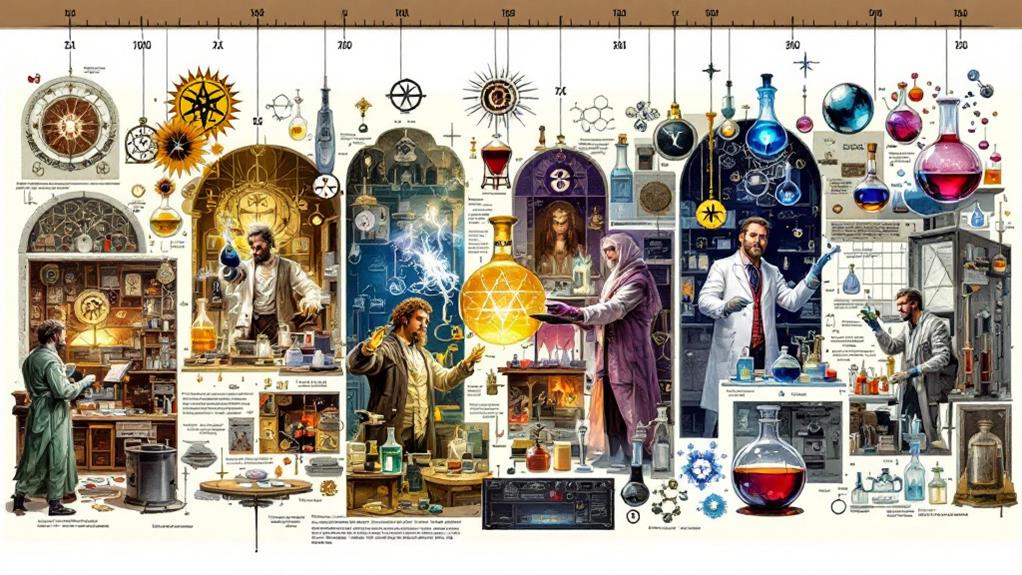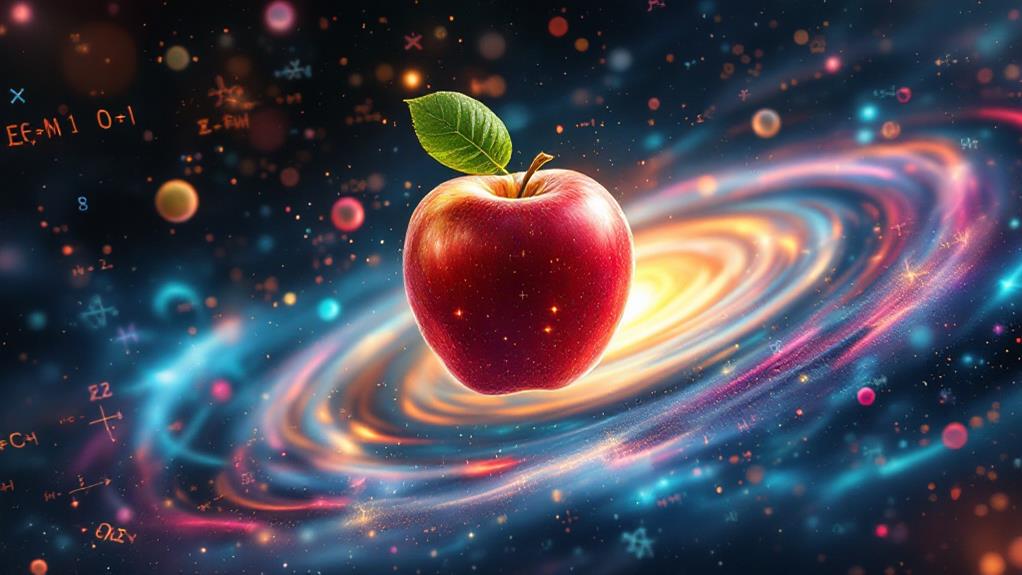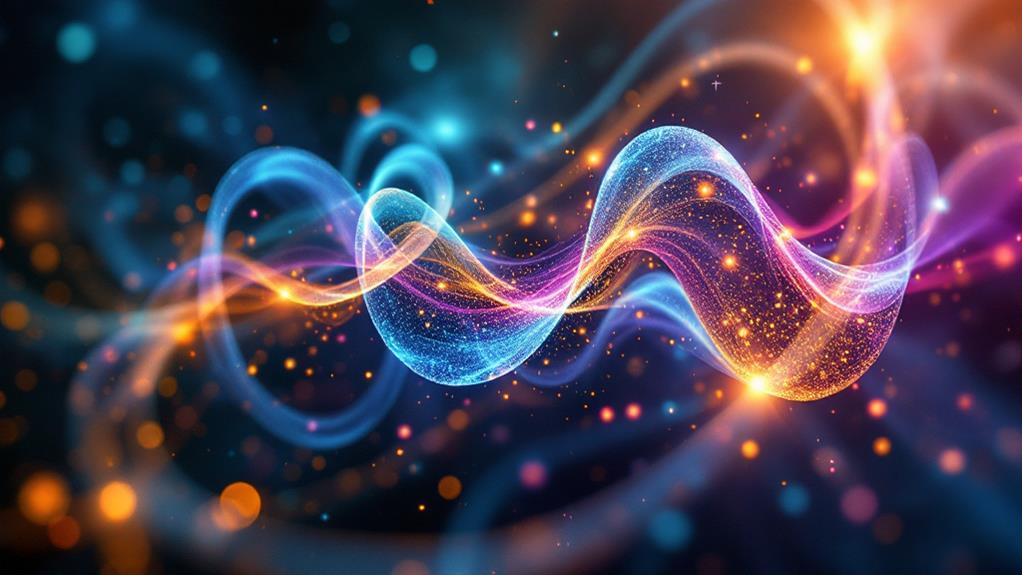How Is Light Measured? Understanding the Science of Illumination
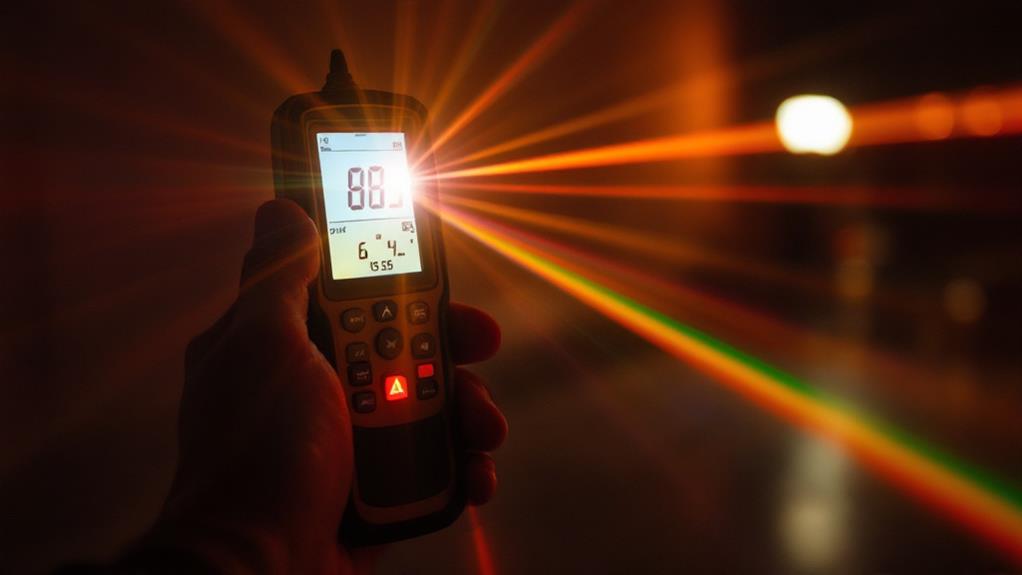
Light measurement involves quantifying various aspects of illumination using specialized units and instruments. You'll encounter photometric quantities like lumens and candelas, which relate to human perception, and radiometric quantities measured in watts, focusing on physical properties. Key instruments include light meters, spectroradiometers, and integrating spheres. Understanding luminous intensity, illuminance, color temperature, and spectral distribution is indispensable for accurate measurements. These concepts apply to lighting design, photography, horticulture, and more. As you investigate the science of illumination, you'll uncover how these principles shape our visual world and technological advancements.
Basic Units of Light Measurement
Scientists and engineers use several key units to quantify light. To understand how light is measured, you'll need to familiarize yourself with these fundamental units. The two most basic concepts are luminous flux and radiant flux.
Luminous flux, measured in lumens (lm), represents the total amount of visible light emitted by a source in all directions. It takes into account the human eye's sensitivity to different wavelengths. On the other hand, radiant flux, measured in watts (W), quantifies the total energy of electromagnetic radiation emitted by a source, including visible and non-visible light.
Other important units include luminous intensity (candelas), illuminance (lux), and luminance (candelas per square meter). Luminous intensity measures the amount of light emitted in a specific direction, while illuminance quantifies the amount of light falling on a surface. Luminance describes the perceived brightness of a surface.
You'll also encounter color temperature, measured in Kelvin (K), which indicates the warmth or coolness of light. Understanding these units will help you analyze and compare different light sources, whether you're working on lighting design, photography, or scientific research.
Photometric Vs Radiometric Quantities
Building on these fundamental units, it's important to distinguish between two main categories of light measurement: photometric and radiometric quantities. Photometric measurements focus on human perception of light, while radiometric measurements deal with the physical properties of electromagnetic radiation.
When you're working with light, you'll encounter these key differences:
- Perception vs. Energy: Photometric quantities relate to how bright light appears to the human eye, while radiometric quantities measure the actual energy of the radiation.
- Spectral Sensitivity: Photometric measurements account for the eye's varying sensitivity to different wavelengths, whereas radiometric measurements treat all wavelengths equally.
- Units: Photometric units include lumens and candelas, while radiometric units use watts and joules.
- Applications: Photometric quantities are used in lighting design and visual comfort assessments, while radiometric quantities are essential in scientific research and solar energy applications.
Understanding luminous flux distribution helps you analyze how light spreads in a given space, while radiant power density measures the amount of radiant energy per unit area. By grasping these concepts, you'll be better equipped to choose the right measurement approach for your specific light-related tasks.
Light Measuring Instruments
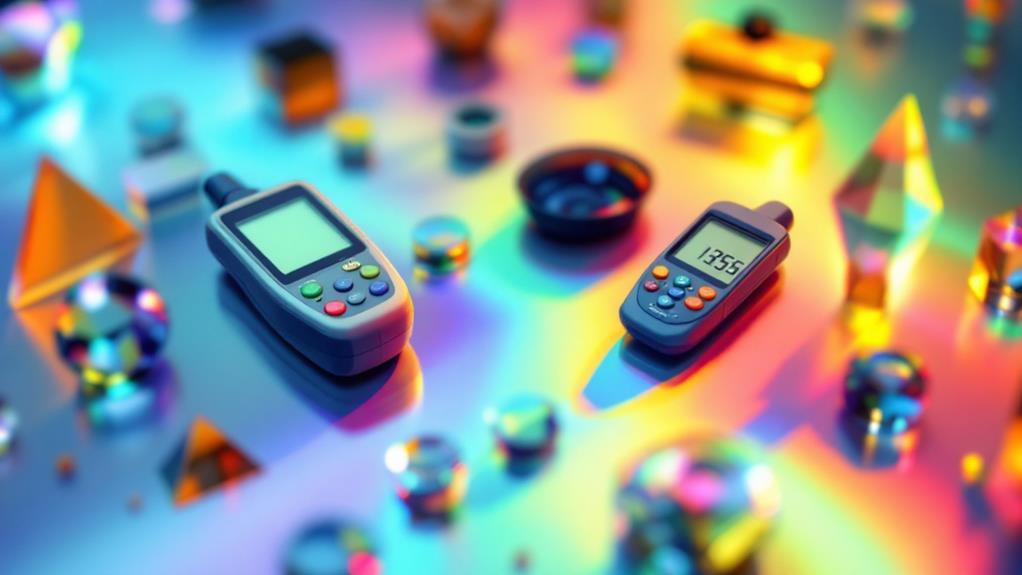
Armed with an understanding of photometric and radiometric quantities, let's investigate the various instruments used to measure light. You'll find a range of specialized tools designed for different light sampling techniques and measurements.
The most common instrument is the light meter, which measures illuminance in lux or foot-candles. Photographers often use handheld light meters to determine proper exposure settings. For more precise measurements, you might use a spectroradiometer, which analyzes the spectral distribution of light across different wavelengths.
When measuring luminous flux, you'll need an integrating sphere. This device captures all the light emitted by a source, allowing for accurate luminous flux calibration. Goniophotometers are used to measure the spatial distribution of light, essential for determining a luminaire's light output in different directions.
For color measurements, colorimeters and spectrophotometers come into play. These instruments can quantify color temperature and color rendering properties of light sources. Ultimately, luminance meters measure the brightness of surfaces, helping assess glare and contrast in lighting designs.
Each of these instruments serves a specific purpose in the field of photometry, enabling precise light measurements for various applications.
Luminous Intensity and Illuminance
While many people confuse luminous intensity and illuminance, these two concepts are distinct and essential in understanding light measurement. Luminous intensity refers to the amount of light emitted from a source in a specific direction, measured in candelas (cd). It's crucial for describing the luminous flux distribution of light sources like LEDs or headlights.
Illuminance, on the other hand, measures the amount of light falling on a surface, typically expressed in lux (lx) or foot-candles (fc). This concept is indispensable for assessing light levels in various environments, from office spaces to outdoor areas.
To better grasp these concepts, consider the following:
- Luminous intensity is a property of the light source, while illuminance depends on the distance from the source.
- As light propagates, illuminance decreases with the square of the distance from the source.
- A single light source can produce different illuminance levels on various surfaces around it.
- Luminous intensity is directional, whereas illuminance is measured on a specific surface.
Understanding these differences is crucial for designers, engineers, and lighting professionals to create ideal lighting solutions for diverse applications.
Color Temperature and Spectral Distribution
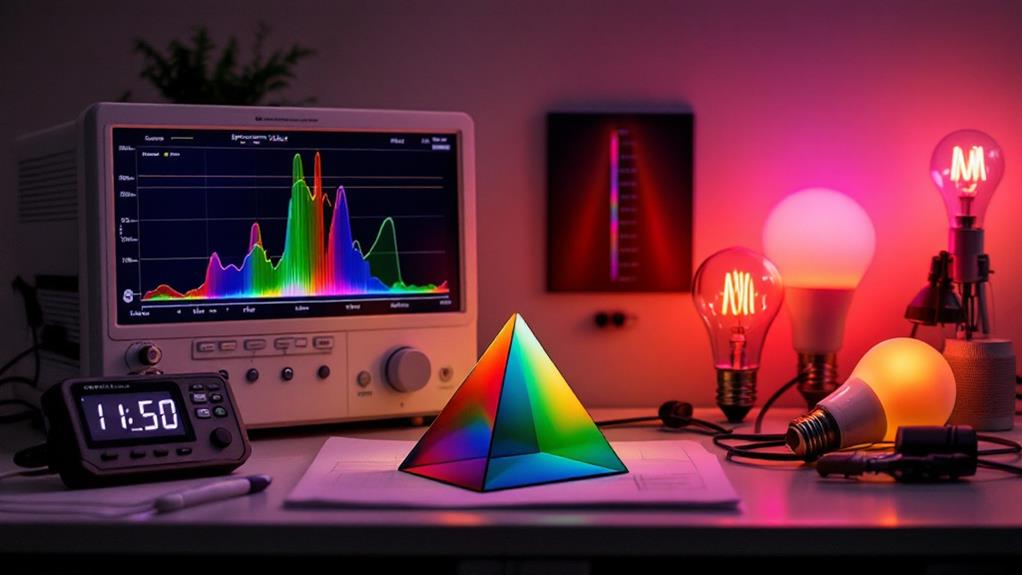
When it comes to measuring light, color temperature and spectral distribution play an essential role in understanding its quality and characteristics. Color temperature, measured in Kelvin (K), describes the warmth or coolness of light. Lower temperatures (2000-3000K) produce warm, yellowish light, while higher temperatures (5000-6500K) result in cooler, bluish light.
Spectral distribution refers to the light spectrum characteristics and wavelength distribution of a light source. It's a graphical representation of the intensity of light at different wavelengths. This distribution affects how colors appear under the light and can impact visual comfort and perception.
You'll find that natural daylight has a broad, continuous spectrum, while artificial light sources often have distinct peaks in their spectral distribution. LED lights, for instance, may have a discontinuous spectrum with specific wavelength peaks.
Comprehending color temperature and spectral distribution is fundamental for various applications, including photography, interior design, and horticulture. By analyzing these aspects, you can select the most suitable lighting for your needs, ensuring optimal visual performance and color rendering in different environments.
Applications in Various Industries
Light measurement techniques find widespread applications across numerous industries, each leveraging illumination science for specific purposes. You'll find these methods essential in fields ranging from architecture to agriculture, where precise control of light can make a significant difference in outcomes.
In the world of architecture and interior design, understanding light measurement is indispensable for creating spaces that are both functional and aesthetically pleasing. Lighting design considerations often include:
- Determining paramount light levels for different tasks
- Balancing natural and artificial light sources
- Minimizing glare and shadows
- Creating desired moods and atmospheres
The film and photography industries rely heavily on accurate light measurement to achieve the perfect exposure and create stunning visual effects. In healthcare, precise light control is fundamental for various treatments and diagnostic procedures.
Manufacturing and quality control processes often use light measurement to inspect products for defects or ensure consistent coloration. Additionally, the agricultural sector employs light measurement techniques to optimize crop growth in greenhouses and indoor farming facilities.
Energy efficiency implications are significant across all industries, as proper light measurement can lead to reduced energy consumption and lower operational costs. By understanding and applying illumination science, you can make informed decisions that benefit both your specific industry and the environment.
Advances in Light Measurement Technology
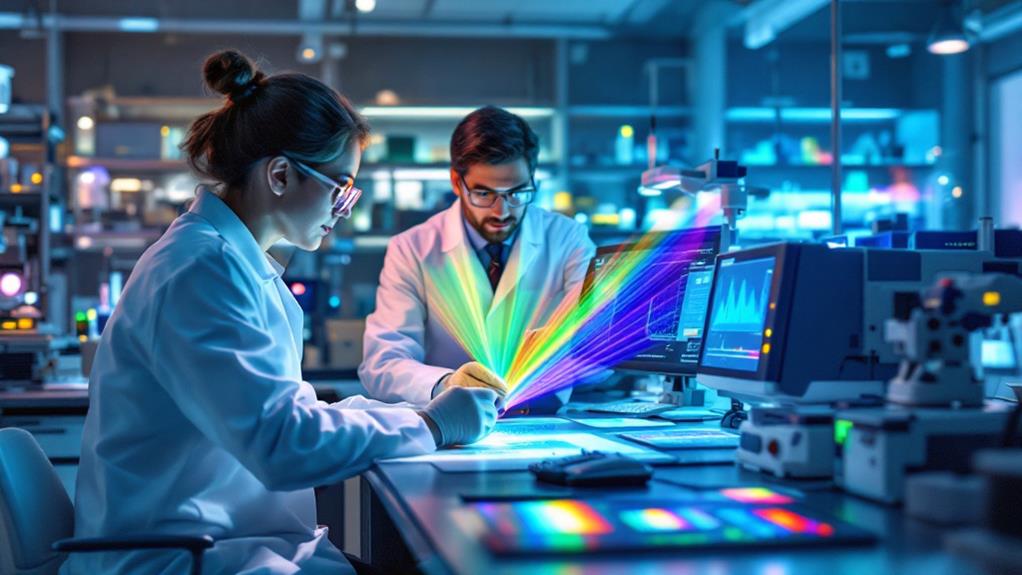
As technology evolves, so do the methods and tools for measuring light. You'll find that recent technological innovations have revolutionized the field of light measurement, offering more accurate and efficient ways to quantify illumination.
One of the most significant advances is the development of smart sensors that can capture and analyze light data in real-time. These devices integrate with smartphones and other digital platforms, allowing you to instantly access and interpret light measurements. You'll also encounter emerging measurement techniques that utilize spectral analysis, enabling you to determine the precise wavelengths and color composition of light sources.
Nanotechnology has paved the way for miniaturized light sensors that can be embedded in various materials and surfaces. This advancement allows for non-invasive light measurements in previously inaccessible environments. Additionally, you'll find that machine learning algorithms are being employed to process vast amounts of light data, providing more comprehensive observations into illumination patterns and behaviors.
The integration of augmented reality (AR) in light measurement devices is another exciting development. You can now visualize light distribution in 3D space, making it easier to identify and address lighting issues in complex environments.
